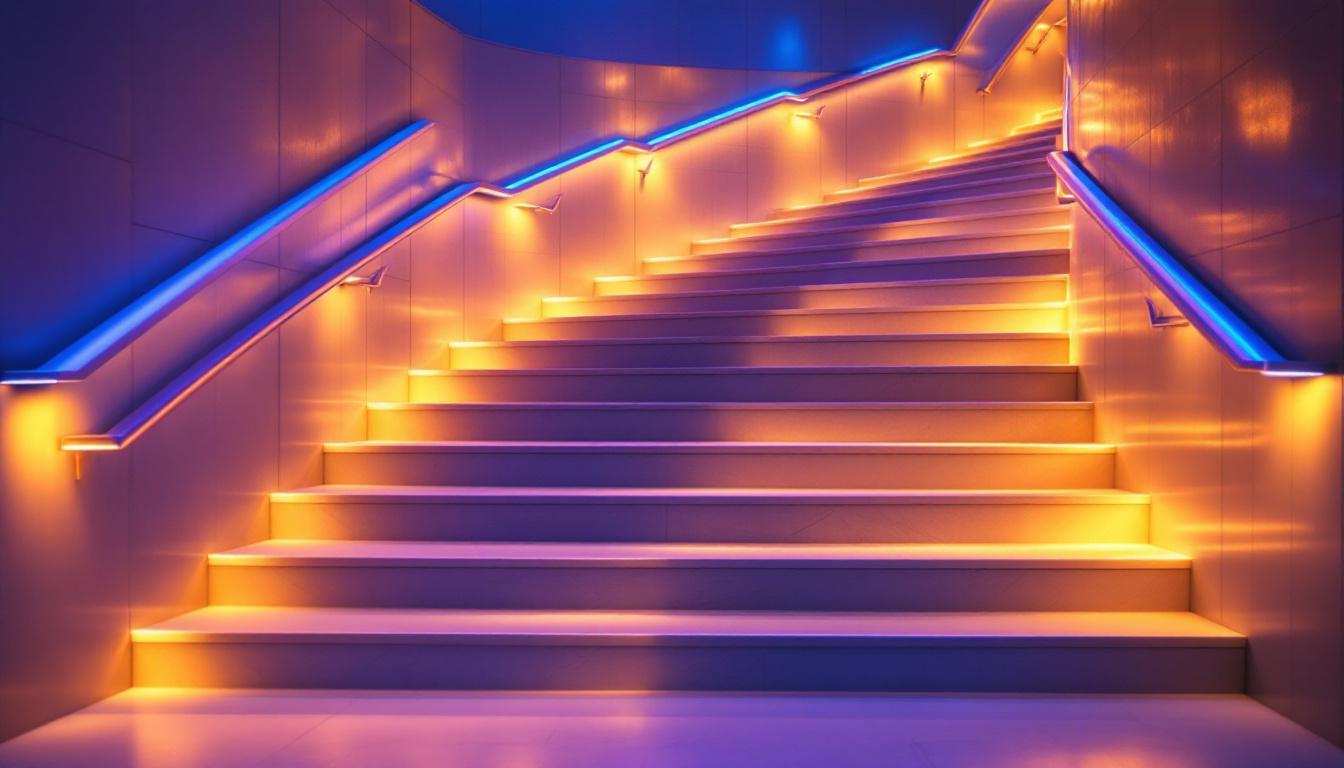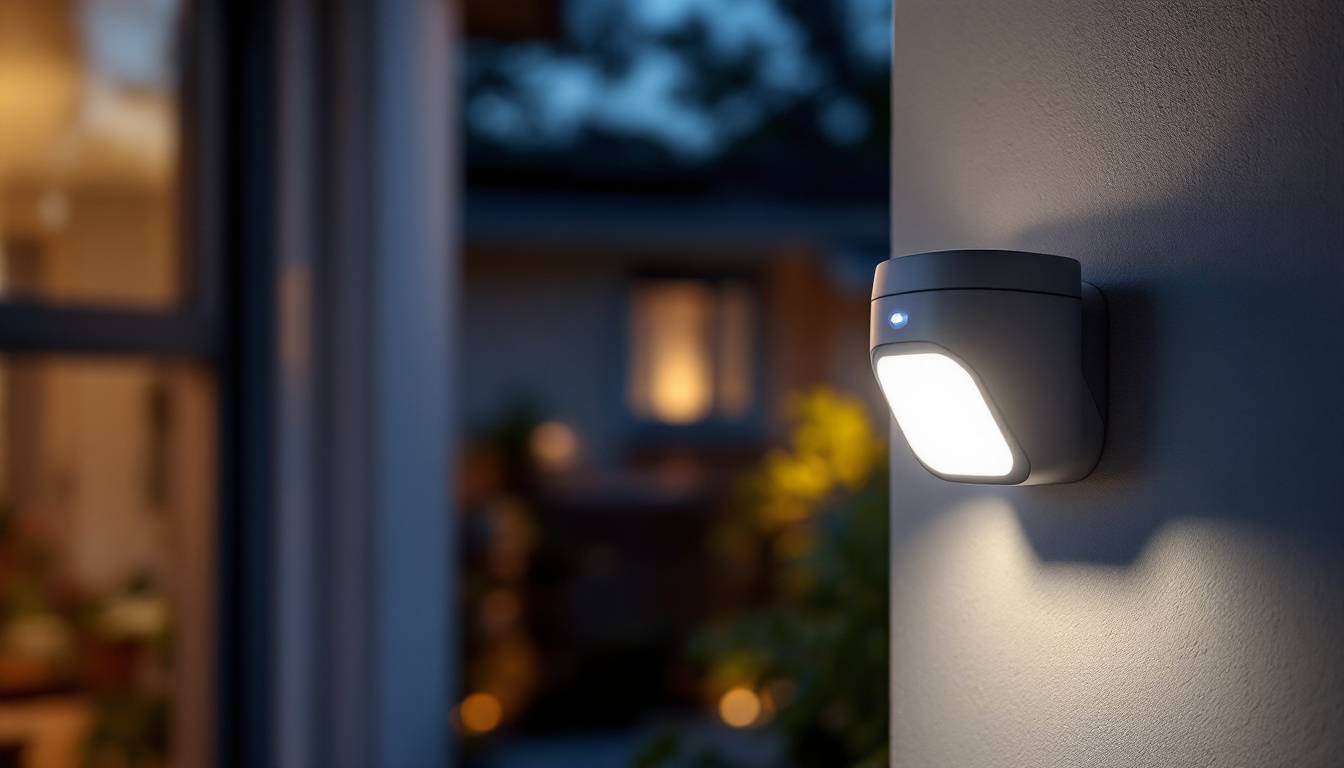
In the world of modern architecture and interior design, LED lighting has emerged as a versatile and efficient solution for various applications. One area where LED lighting shines particularly bright is in stairway illumination. Proper lighting for stairs is not only crucial for safety but also enhances the aesthetic appeal of a space. This article delves into everything lighting contractors need to know about LED stair lighting, from practical applications to design considerations.
LED stair lighting refers to the use of light-emitting diodes to illuminate staircases. This type of lighting can be integrated into various architectural elements, providing both functional and decorative benefits. The primary goal of LED stair lighting is to ensure visibility, thereby reducing the risk of accidents. However, it also serves to enhance the overall design of the space.
When considering lighting options for stairs, LEDs offer numerous advantages over traditional lighting methods. First and foremost, they are energy-efficient, consuming significantly less power while providing the same, if not better, brightness levels. This efficiency translates to lower energy bills and a reduced environmental footprint.
Another benefit is their longevity. LEDs have a lifespan that can exceed 25,000 hours, meaning they require less frequent replacement compared to incandescent or fluorescent bulbs. This durability makes them a cost-effective choice in the long run, especially in high-traffic areas like staircases.
LED stair lighting offers unparalleled design flexibility. With a variety of colors, brightness levels, and installation options, contractors can tailor the lighting to fit the specific needs of the project. Whether it’s a residential home, commercial building, or public space, LED lights can be seamlessly integrated into the design, enhancing both functionality and aesthetics.
Moreover, LEDs can be installed in various ways—recessed into the stair treads, mounted on walls, or even embedded in handrails. This versatility allows for creative lighting designs that can transform a simple staircase into a striking architectural feature. Additionally, the ability to customize the color temperature of the LEDs means that designers can create different atmospheres; warm white lights can evoke a cozy, inviting feel, while cool white lights can lend a modern, sleek look.
Furthermore, the integration of smart technology with LED stair lighting is becoming increasingly popular. Homeowners can now control their stair lighting through mobile apps or smart home systems, allowing for personalized settings based on time of day or occupancy. For example, lights can be programmed to turn on automatically when someone approaches the stairs, ensuring safety without the need for manual switches. This not only enhances convenience but also adds an element of modern sophistication to the space.
Selecting the appropriate LED products for stair lighting involves several considerations. Factors such as brightness, color temperature, and beam angle play a crucial role in achieving the desired effect.
Brightness is measured in lumens, and it’s essential to choose the right lumen output for stair lighting. Generally, a range of 100 to 200 lumens per stair is recommended to ensure safety without being overly bright. The goal is to provide enough light to illuminate the steps clearly while avoiding glare that could distract or discomfort users.
Contractors should also consider the overall lighting scheme of the space. If the surrounding area is brightly lit, a lower lumen output may suffice. Conversely, in dimly lit environments, higher lumen levels may be necessary to achieve adequate visibility.
Color temperature, measured in Kelvin (K), affects the ambiance of the space. For stair lighting, a color temperature between 2700K and 3000K is often preferred, as it provides a warm, inviting glow. However, in modern or minimalist designs, cooler temperatures around 4000K can create a sleek, contemporary look.
It’s crucial to consider the overall design theme and the emotions that different color temperatures evoke. Warmer tones tend to create a cozy atmosphere, while cooler tones can lend a more professional or clinical feel.
The beam angle of the LED fixtures determines how focused or dispersed the light will be. For stair lighting, a narrower beam angle is often more effective, as it directs light precisely where it’s needed—on the steps themselves. A beam angle of 30 degrees or less is typically suitable for this application.
Wider beam angles can be used for ambient lighting, but they may not provide the focused illumination required for safety on stairs. Therefore, selecting the appropriate beam angle is essential for achieving the desired lighting effect.
Proper installation is critical to the effectiveness of LED stair lighting. It not only ensures safety but also enhances the overall aesthetic appeal of the staircase.
Placement of LED fixtures should be strategic to maximize visibility. For recessed lighting, fixtures should be installed at a height that illuminates the entire step without causing glare. Typically, fixtures are placed on the risers or along the sides of the stairs, depending on the design.
In cases where wall-mounted lights are used, they should be positioned at a height of approximately 6 to 7 feet from the ground to cast light down onto the stairs effectively. Additionally, ensuring that the fixtures are evenly spaced can help to create a uniform light distribution, enhancing both safety and aesthetics.
When installing LED stair lighting, it’s essential to adhere to local electrical codes and regulations. Proper wiring is crucial to prevent electrical hazards and ensure the longevity of the lighting system. Contractors should use high-quality materials and components to ensure a safe and reliable installation.
Moreover, it’s advisable to incorporate dimmers or smart controls into the lighting system. This allows users to adjust brightness levels based on their needs, enhancing both functionality and energy efficiency.
While LEDs are known for their longevity, regular maintenance is still necessary to ensure optimal performance. Dust and debris can accumulate on fixtures, diminishing their brightness and effectiveness. Periodic cleaning of the fixtures and surrounding areas will help maintain a clean and well-lit environment.
Additionally, contractors should educate clients on how to monitor the performance of their LED stair lighting. If any fixtures begin to flicker or dim, it may indicate a need for replacement or repair. Proactive maintenance can prevent larger issues down the line.
Safety is the primary concern when it comes to stair lighting. Properly illuminated stairs can significantly reduce the risk of accidents, making it essential for contractors to prioritize safety in their designs.
One effective way to enhance safety is by illuminating the edges and risers of the stairs. This can be achieved through the use of LED strip lights or small fixtures that highlight these critical areas. By drawing attention to the stair edges, users can better gauge their footing, reducing the likelihood of missteps.
Additionally, incorporating contrasting colors or brightness levels can further enhance visibility. For instance, using a brighter light on the risers compared to the treads can create a clear distinction, guiding users safely up and down the stairs.
In commercial or public spaces, emergency lighting is a vital consideration. LED stair lighting can be integrated with emergency lighting systems to ensure that stairways remain illuminated during power outages or emergencies. This not only aids in safe evacuation but also complies with safety regulations.
Contractors should work closely with clients to determine the best emergency lighting solutions for their specific needs. This may involve the installation of battery backup systems or utilizing fixtures that automatically switch to emergency mode in the event of a power failure.
The field of LED stair lighting is constantly evolving, with new trends emerging that push the boundaries of design and functionality. Staying informed about these trends can help contractors offer innovative solutions to their clients.
Smart lighting technology has gained popularity in recent years, allowing users to control their lighting systems through smartphones or voice-activated devices. Integrating smart technology into LED stair lighting can enhance convenience and energy efficiency. Users can set schedules, adjust brightness, and even change colors based on their preferences.
This level of control not only improves user experience but also contributes to energy savings, as lights can be programmed to turn off when not in use.
Color-changing LEDs are another exciting trend in stair lighting. These fixtures allow users to customize the color of their stair lighting, creating dynamic atmospheres for different occasions. Whether it’s a soft warm glow for a cozy evening or vibrant colors for a party, color-changing LEDs offer versatility that can enhance the overall experience of the space.
Contractors can leverage this trend to create unique lighting designs that cater to the specific preferences of their clients, setting their work apart in a competitive market.
LED stair lighting is an essential aspect of modern design, combining safety, functionality, and aesthetics. By understanding the benefits of LED technology, selecting the right products, and adhering to best installation practices, lighting contractors can create stunning and safe stairway environments.
As trends continue to evolve, staying informed about new technologies and design innovations will be crucial for contractors looking to provide the best solutions for their clients. With the right approach, LED stair lighting can transform ordinary staircases into extraordinary features that enhance both safety and style.
Ready to elevate your stairway designs with the best in LED lighting? At LumenWholesale, we provide lighting contractors with exceptional, spec-grade LED products that combine safety, functionality, and style. Our commitment to quality and affordability means you can access a wide range of lighting solutions that meet the highest industry standards, all at wholesale prices. Say goodbye to middleman markups and hello to free shipping on bulk orders, ensuring you get the premium lighting your projects deserve. Don’t compromise on quality or value—explore our collection now and discover the perfect lighting for your next project at the best value.

Discover the ultimate guide to wall sconce light fixtures with our essential checklist tailored for lighting professionals.

Discover essential tips for lighting contractors to enhance outdoor spaces with solar lighting.
Discover the key insights lighting contractors need to meet client expectations for stairway lighting projects.

Discover how motion outdoor sensors revolutionize safety in lighting installations by providing efficient, energy-saving solutions.